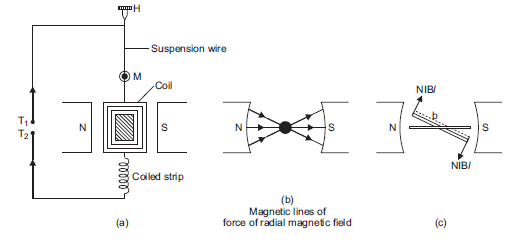 Short Answer Type
Short Answer TypeA convex lens made up of glass of refractive index 1.5 is dipped, in turn, in (i) a medium of refractive index 1.65, (ii) a medium of refractive index 1.33.
(a) Will it behave as a converging or a diverging lens in the two cases?
(b) How will its focal length change in the two media?Draw a plot showing the variation of photoelectric current with collector plate potential for two different frequencies, v1 >v2 , of incident radiation having the same intensity. In which case will the stopping potential be higher? Justify your answer.
Write briefly any two factors which demonstrate the need for modulating a signal.
Draw a suitable diagram to show amplitude modulation using a sinusoidal signal as the modulating signal.
Use the mirror equation to show that:
(a) an object placed between f and 2f of a concave mirror produces a real image beyond 2f.
(b) a convex mirror always produces a virtual image independent of the location of the object.
(c) an object placed between the pole and focus of a concave mirror produces a virtual and enlarged image.
(a) Using de Broglie’s hypothesis, explain with the help of a suitable diagram, Bohr’s second postulate of quantization of energy levels in a hydrogen atom.
(b) The ground state energy of hydrogen atom is –13.6 eV. What are the kinetic and potential energies of the electron in this state?You are given a circuit below. Write its truth table. Hence, identify the logic operation carried out by this circuit. Draw the logic symbol of the gate it corresponds to. 
A compound microscope uses an objective lens of focal length 4 cm and eyepiece lens of focal length 10 cm. An object is placed at 6 cm from the objective lens. Calculate the magnifying power of the compound microscope. Also calculate the length of the microscope.
OR
A giant refracting telescope at an observatory has an objective lens of focal length 15 m. If an eyepiece lens of focal length 1.0 cm is used, find the angular magnification of the telescope.
If this telescope is used to view the moon, what is the diameter of the image of the moon formed by the objective lens? The diameter of the moon is 3.42 × 106 m and the radius of the lunar orbit is 3.8 × 108 m.
 Long Answer Type
Long Answer Type(a) Using Ampere’s circuital law, obtain the expression for the magnetic field due to a long solenoid at a point inside the solenoid on its axis.
(b) In what respect is a toroid different from a solenoid? Draw and compare the pattern of the magnetic field lines in the two cases.
(c) How is the magnetic field inside a given solenoid made strong?
State the working of a.c. generator with the help of a labelled diagram.
The coil of an a.c. generator having N turns, each of area A, is rotated with a constant angular velocity. Deduce the expression for the alternating e.m.f. generated in the coil.
What is the source of energy generation in this device?
OR
(a) Show that in an a.c. circuit containing a pure inductor, the voltage is ahead of current by  /2 in phase.
/2 in phase.
(b) A horizontal straight wire of length L extending from east to west is falling with speed v at right angles to the horizontal component of Earth’s magnetic field B.
(i) Write the expression for the instantaneous value of the e.m.f. induced in the wire.
(ii) What is the direction of the e.m.f.?
(iii) Which end of the wire is at the higher potential?
(a) State the principle of the working of a moving coil galvanometer, giving its labelled diagram.
(b) “Increasing the current sensitivity of a galvanometer may not necessarily increase its voltage sensitivity.” Justify this statement.
(c) Outline the necessary steps to convert a galvanometer of resistance RG into an ammeter of a given range.
a) Principle of moving galvanometer:
A current carrying coil when kept inside a uniform magnetic field, can experience a torque.
When current (I) is passed in the coil, torque acts on the coil given by, 
where q is the angle between the normal to plane of coil and the magnetic field of strength B,
N is the number of turns in a coil.
When the magnetic field is radial, as in the case of cylindrical pole pieces and soft iron core, then in every position of coil the plane of the coil, is parallel to the magnetic field lines, so that
 = 90° and sin 90° =1
= 90° and sin 90° =1
Deflecting Torque is given by, 
If C is the torsional rigidity of the wire and q is the twist of suspension strip, then restoring torque =C
For equilibrium, deflecting torque = restoring torque,
That is, deflection of coil is directly proportional to current flowing in the coil.
b) 
Clearly, the voltage sensitivity is dependent on current sensitivity and the resistance of the galvanometer. If we increase current sensitivity and resistance G is larger, then it is not certain that voltage sensitivity will be increased. Thus, the increase of current sensitivity does not imply the increase of voltage sensitivity.
c)
Conversion of galvanometer into ammeter:
In order to convert galvanometer into ammeter a shunt resistance i.e., a small resistance in parallel is connected across the coil of galvanometer.
Let G be the resistance of galvanometer and Ig the current required for full scale deflection.
Suppose this galvanometer is to converted into ammeter of range I ampere and the value of shunt required is S.
If, Is is the current in the shunt, then 
which is the required expression for conversion of galvanometer into ammeter.
